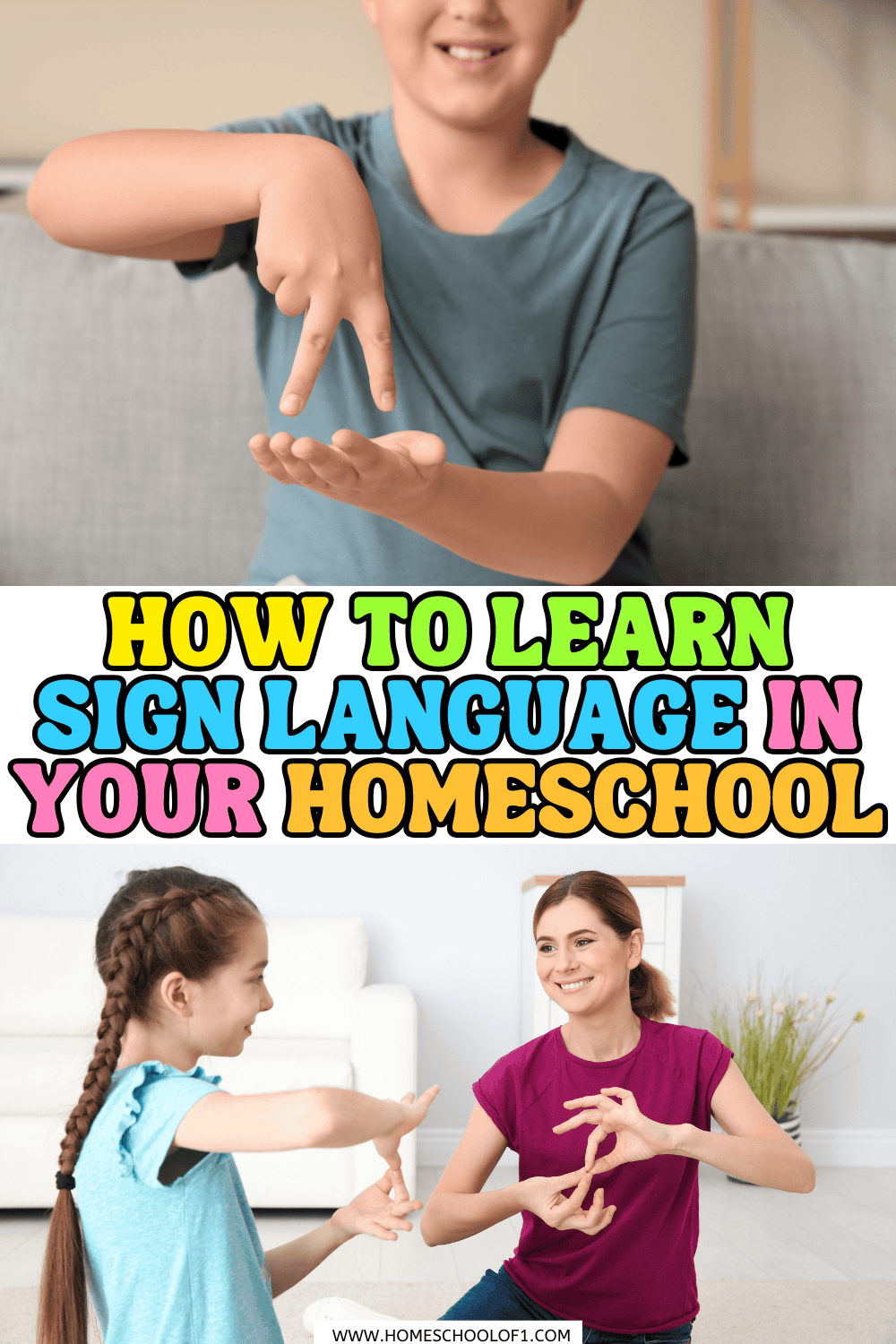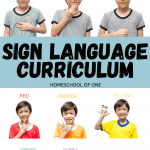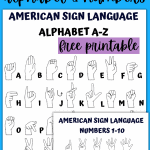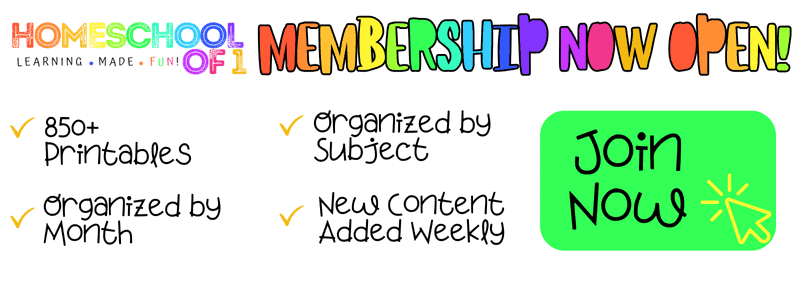Best ASL Homeschool Curriculum + Free Poster
Learning sign language at home is one of the most rewarding additions to a homeschool routine. The right ASL homeschool curriculum helps kids develop language skills while building empathy and confidence.
If you’ve ever wondered how to learn sign language in your homeschool, it’s simpler than you might think. Start small, with everyday signs, songs, and short practice sessions, and watch your child’s understanding grow through games, stories, and visuals.
When my son first showed interest, we practiced just a few minutes a day. Before long, it became part of our rhythm, and he began signing naturally in conversation.
Whether your child needs a language credit or simply wants to explore something new, learning sign language together makes it both practical and deeply meaningful.

**This post may contain affiliate links. As an Amazon Associate and a participant in other affiliate programs, I earn a commission on qualifying purchases.**
How to Learn Sign Language at Home
Learning sign language starts with everyday communication. Begin with simple signs your child can use right away, family members, emotions, colors, and greetings, and build from there. Short, consistent practice sessions work better than long lessons, especially when you mix in play.
Try watching short videos together or using sign language songs to make new vocabulary stick. Add visual cues like flashcards or posters around your learning space to encourage casual review throughout the day.
Reading a favorite story and pausing to sign key words, or labeling items around the room, helps kids connect signs to meaning. The goal isn’t perfection but comfort, seeing sign language as part of normal conversation rather than a separate subject.
Encourage curiosity and interaction more than memorization. Kids learn best when it feels personal, practical, and fun.

Free Homeschool Sign Language Curriculum
One of the best parts about teaching sign language at home is that you don’t need an expensive program to get started. Many free sign language curriculum options and resources can give your child a solid foundation in ASL, perfect for elementary through high school.
Because ASL is recognized as a foreign language, it can often count toward high school and college language credits. Just be sure to confirm with your state or university, since requirements can vary.
Start with hands-on tools to make learning visual and fun:
- Free ASL alphabet worksheets – Practice fingerspelling and letter recognition.
- Free sign language worksheets – Combine creativity and language learning through coloring and drawing activities.
Here are some excellent free ASL learning platforms to support your homeschool lessons:
- ASL Connect by Gallaudet University – Introductory courses and live interaction with fluent signers.
- Sign Language 101 – Structured, video-based lessons created by certified ASL instructors.
- SignSchool – A fun, interactive site that works for both kids and adults.
- Start ASL – Beginner-friendly lessons and cultural insights.
- Baby Sign Language YouTube Channel – A playful series for younger learners.
- Signing Time ASL Dictionary
- ASL Kids – Videos and printable materials designed just for children.
- American Society for Deaf Children – Family-oriented ASL resources and activities.
If your state offers a virtual school option, check whether they include ASL as part of their high school electives, many, including Florida Virtual School, do.
Learning ASL through free videos, printables, and community-driven resources is a great way to build confidence and connection before moving on to a full paid curriculum.
ASL Workbooks Worth Adding to Your Homeschool
While many sign language resources are free, a few well-chosen ASL workbooks can make a big difference in structure and progress. These are great for guided lessons, review activities, and handwriting practice alongside video or online instruction.
Here are some of the best options to consider:
- American Sign Language for Beginners – A clear, step-by-step introduction covering essential vocabulary, grammar, and conversation basics.
- American Sign Language for Kids – Designed for younger learners, with colorful visuals and kid-friendly examples that make practice fun.
- Barron’s American Sign Language: A Comprehensive Guide to ASL 1 & 2 – Ideal for middle and high school students; includes online video practice and structured lessons aligned with college-level ASL 1–2.
- ASL Flashcards – A hands-on companion to reinforce signs and improve recall during games or daily review.
- American Sign Language Workbook – A versatile option for independent study or supplementing any ASL homeschool curriculum.
These books work especially well when paired with visual tools like flashcards, posters, and video lessons to help kids retain what they learn through repetition and context.

Sign Language Curriculum for High School
If you’re looking for a structured program that counts toward high school credit, Mr. D Math’s online ASL curriculum is an excellent choice. My son completed ASL 1 and loved it so much that we’re already planning to move on to ASL 2 this summer. The lessons are self-paced, engaging, and thoughtfully designed for homeschoolers.
What I appreciate most about these courses is that they go beyond vocabulary, students also learn about Deaf culture and community, which helps them see ASL as more than just a language requirement. You can read more about our experience in our full Mr. D ASL review.
If your teen wants extra conversation practice, Outschool offers live online ASL classes with qualified instructors, perfect for building fluency and confidence through real interaction.
Get Your Free Printable Sign Language Poster Here!
If you don’t see the form below, click here to get the free poster.
Can you sign? If so, what online course do you recommend? Please let me know in the comments, I would love to hear.
Last Updated on 23 October 2025 by Clare Brown









